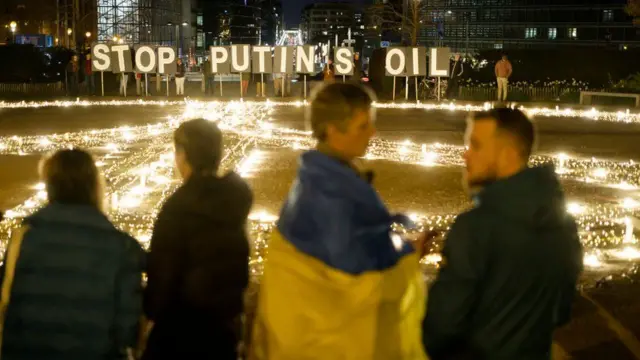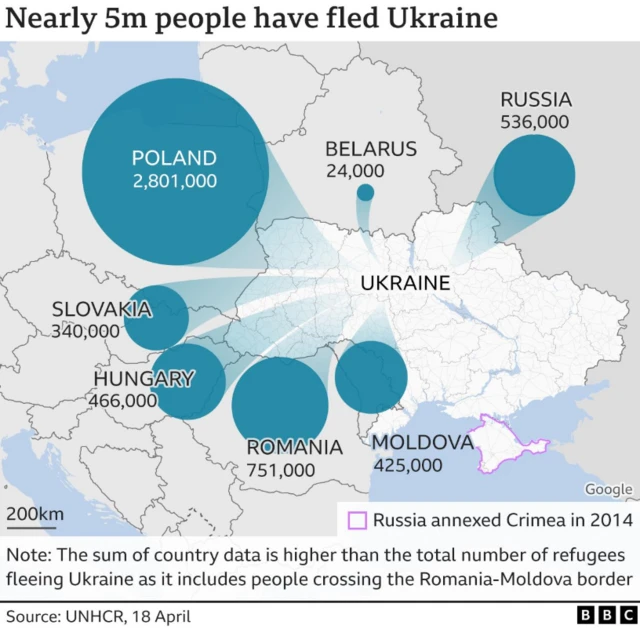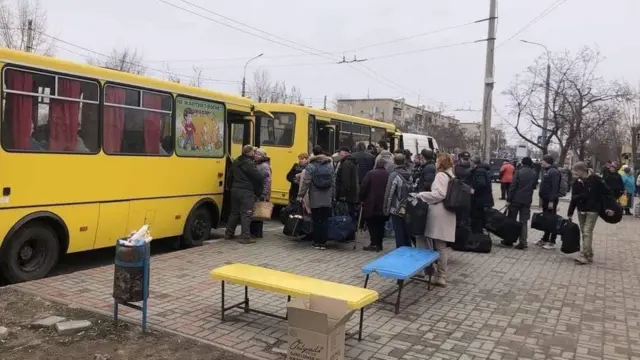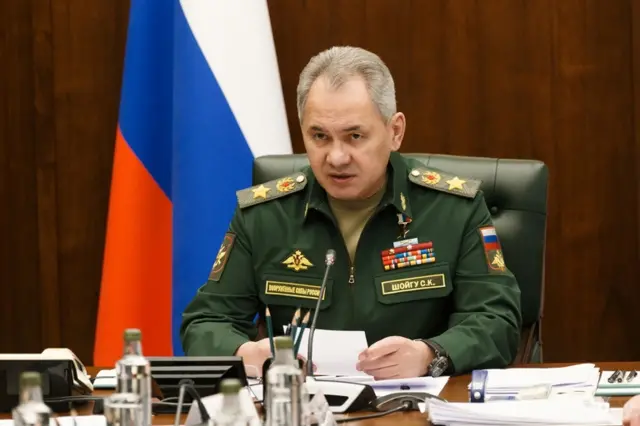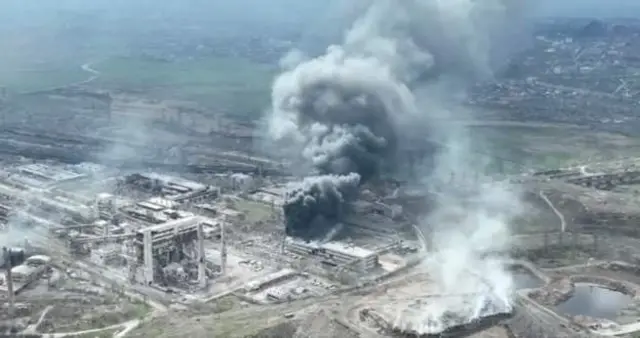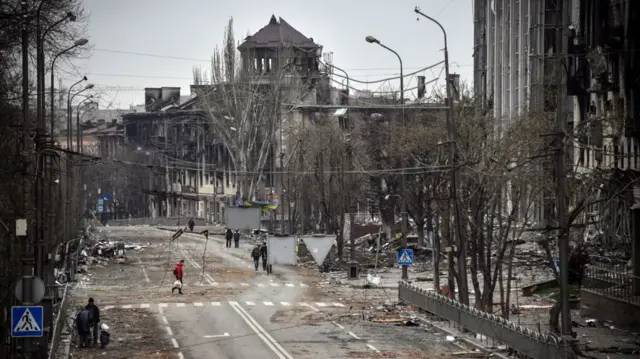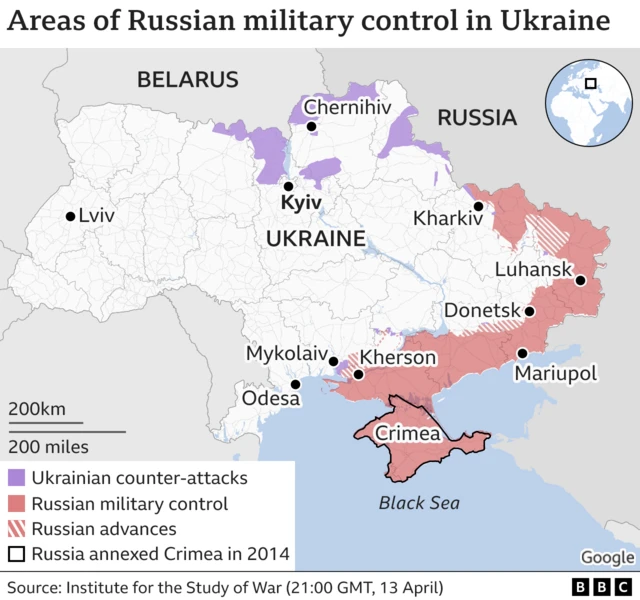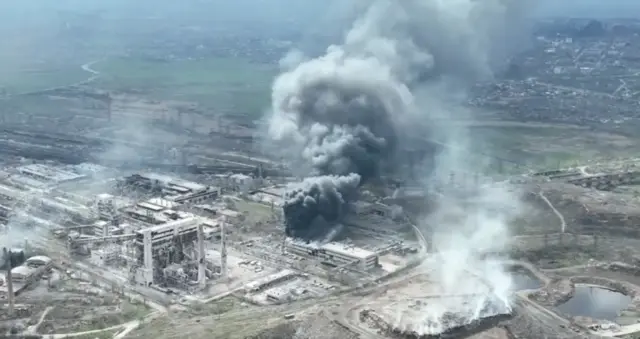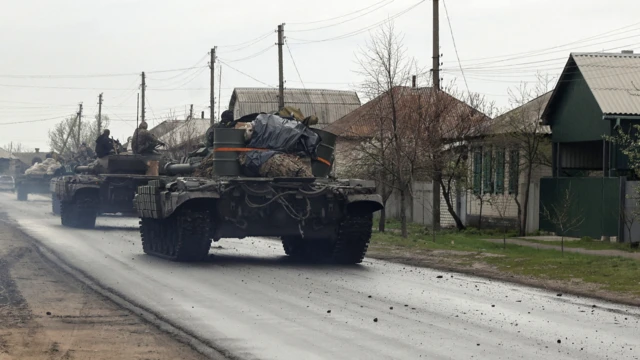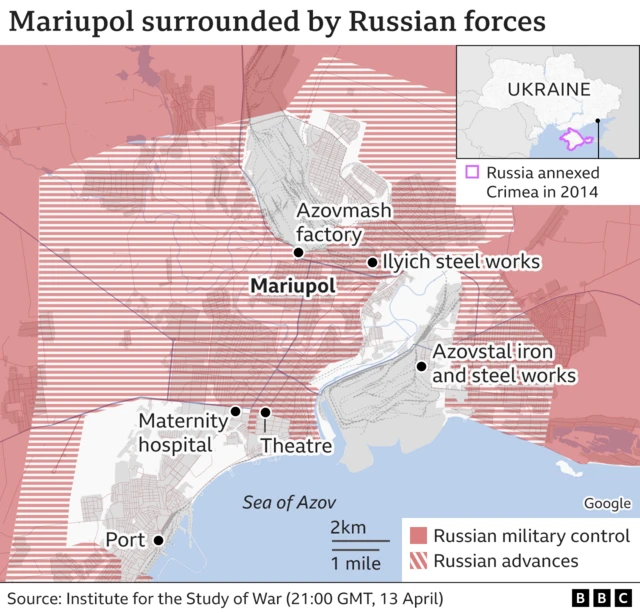How big are the forces in the east?published at 13:44 BST 19 April 2022
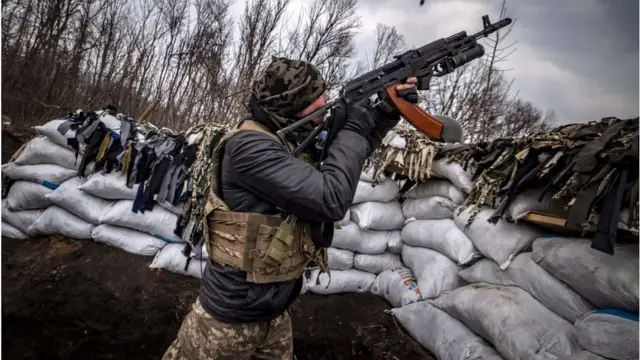 Image source, Getty Images
Image source, Getty ImagesBattles in the east may more closely resemble the conventional combat of World War Two
As we have been reporting, Russia's expected new offensive in eastern Ukraine has begun.
Russian forces
For several weeks, Moscow has been concentrating reinforcements – new units and damaged units from north-eastern Ukraine – in the Donbas region, according to the Institute for the Study of War (ISW).
US officials say Russia now has 76 battle groups in the east, having added 11 to the area in recent days. They typically comprise 700 to 900 soldiers plus military equipment.
Another way to put it is there are some 70,000 Russian troops in Donbas, according to Ukrainian estimates.
Russian Security policy expert Dr Aglaya Snetkov points out there are some battle groups committed to the area around the devastated southern port city of Mariupol.
If that key city falls, it would allow those forces to move north and join the fight in Donbas, which could be important but maybe not decisive, Snetkov says.
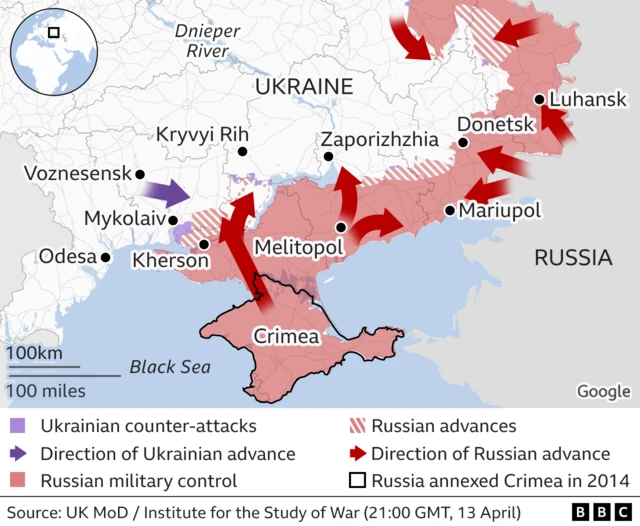 Image source, .
Image source, .Ukrainian forces
While we have estimates of Russian force numbers from Western agencies, Ukraine and Russia itself, we've heard much less about the size of Ukrainian forces and losses, Snetkov says.
This is partly because Ukraine does not want to share this information in case it could be of advantage to its enemy, and the West seems to be following an unspoken agreement to be silent on this, she says.
At the start of the war Ukraine had 10 brigades in the east of the country, regarded as the best-equipped and best-trained soldiers the country has.
Military equipment
The Ukrainians have the manpower but lack military equipment, whereas Russian forces have sufficient military equipment but lack manpower, Snetkov says, given the traditional view that attacking forces need overwhelming numbers.
The battles in the east are likely to differ from earlier battles around Kyiv, more closely resembling conventional World War Two combat, with trenches, and heavy equipment such as tanks, Snetkov says.
Russian forces could gain ground with heavy concentration of artillery and numbers, but a dramatic success is unlikely, according to the ISW.
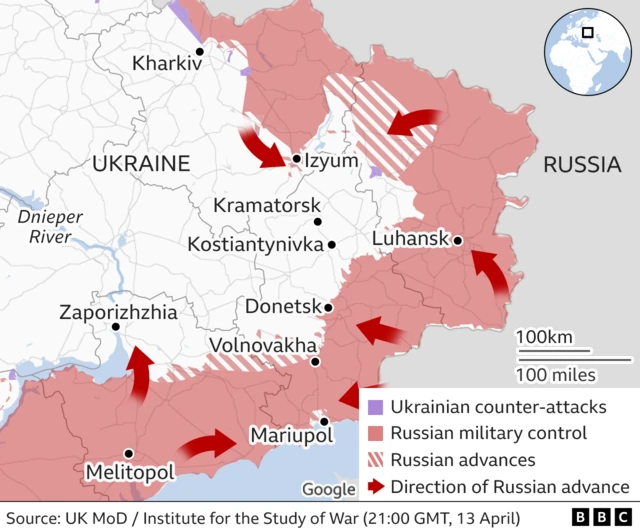 Image source, .
Image source, .

